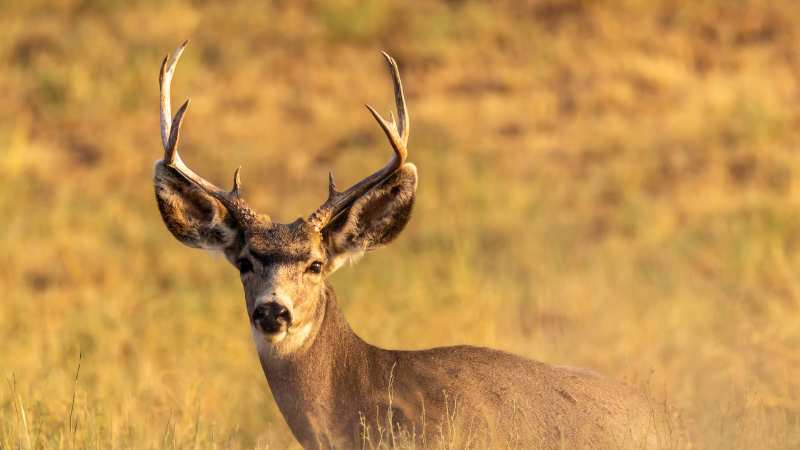There have been recent reports of two hunters who allegedly died after consuming venison from deer that were affected by Chronic Wasting Disease (CWD), also known as ‘Zombie Deer Disease.’ This news has caused worry among the hunting community and the general public.
Two hunters from Wyoming are believed to have died from complications related to Chronic Wasting Disease (CWD), according to a study published in the journal Neurology. CWD is a fatal illness that mainly affects deer species and causes progressive degeneration of the brain in infected animals.
Chronic Wasting Disease (CWD) is a neurodegenerative disease caused by misfolded proteins known as prions. It is similar to Creutzfeldt-Jakob Disease (CJD) in humans and is also caused by prion infections. A recent study has found a possible connection between hunters’ deaths and CWD. The study suggests that the disease may be transmitted from infected deer to humans.
Despite claims that Chronic Wasting Disease (CWD) can be transmitted to humans, many wildlife experts and neurologists remain skeptical. They point out that no solid evidence supports the direct transmission of the disease to humans. The articles that initially reported the deaths have been criticized for potentially causing unnecessary alarm.
It is essential to take the possibility of Chronic Wasting Disease (CWD) affecting humans seriously. However, it is crucial to approach the subject with scientific rigor and avoid spreading unverified information. The hunting community is advised to follow safety guidelines when handling and consuming game meat to prevent the spread of CWD.
Unraveling the mystery of Zombie Deer Disease
In the forest, a new disease called ‘Zombie Deer Disease’ is causing concern among wildlife experts and hunters. But what exactly is this disease, and why is it making headlines?
Zombie Deer Disease, also known as Chronic Wasting Disease (CWD), is a neurological disorder that affects various deer species, including elk, reindeer, sika deer, and moose. The name is derived from the affected animals’ symptoms, such as a vacant stare, significant weight loss, lack of coordination, and a tendency to wander aimlessly. These symptoms resemble the characteristics of zombies depicted in horror fiction.
CWD, which stands for Chronic Wasting Disease, is caused by a misfolded protein called a prion. Unlike most infectious diseases caused by bacteria or viruses, CWD is spread by these abnormal proteins. When a prion infects an animal, it causes other normal proteins to misfold, starting a chain reaction leading to extensive brain damage.
Animals infected with this disease may show noticeable changes in their behavior and appearance. These changes can include weight loss, decreased interactions with others, tremors, repetitive walking in set patterns, and other behavioral changes. The disease spreads through direct contact with bodily fluids or indirectly through contaminated environments. Detecting the disease in its early stages can be challenging as symptoms may take months or even years.
Although Chronic Wasting Disease (CWD) has been recognized to affect several members of the deer family, scientists are still debating the possibility of its transmission to humans. While there have been no confirmed cases of CWD in humans, the potential threat cannot be entirely ruled out. Therefore, it is advised to be cautious while consuming meat from infected animals.
Wildlife agencies are making ongoing efforts to manage and contain CWD by monitoring deer populations and implementing measures to prevent the spread of the disease. Research is also being conducted to deepen our understanding of CWD and its implications for wildlife and human health.
“Zombie Deer Disease” may sound like a fictional creation, but it is a genuine concern for those who work to manage and protect our wildlife populations. As research continues, it is hoped that more effective strategies can be developed to fight this harmful disease.



